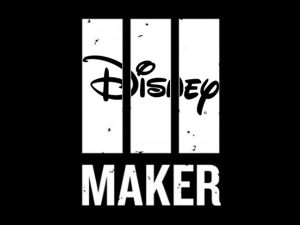This article was originally published via The Guardian Media Network.
 We are all used to seeing movie and TV stars being promoted in the subway. Well, YouTube now feels that if you have at least 1.4 million registered fans – you are worthy of an ad campaign as well.
We are all used to seeing movie and TV stars being promoted in the subway. Well, YouTube now feels that if you have at least 1.4 million registered fans – you are worthy of an ad campaign as well.
Hollywood is clearly taking note of the potential of YouTube talent. About a month ago, in one of its biggest deals in recent years, Disney bought Maker Studios for roughly $1bn – or about £600m (half of it in cash and the rest in Disney stock). Maker Studios represents many popular YouTube talents and help them to produce and monetise their content.
This deal reminded me of the deal in 2009 in which Disney acquired Marvel. When comparing the valuation of Marvel and Maker at the moment of purchase, the difference is staggering. In 2009, the year it was acquired, Marvel did about $670m in sales. Disney paid $4.94bn for Marvel, which gave it a valuation multiple of about seven.
In the case of Maker Studios, the revenue numbers were not public knowledge. But we do know that Maker was evaluated at $300m about six months ago, when it went through another round of funding. Even if we assume that Maker got a very generous valuation back then (say 10x), its revenue couldn’t have been more than $30m. Given that Disney bought it for $500m (with up to $450m in performance-based earn-out), Maker basically received an evaluation of between 16x and 31x. What makes Maker Studios worth at least 220% – and possibly as much as 440% – more than the people who brought us Spiderman?
Much of it is about the number of YouTube subscribers. Maker’s revenue may be small but its reach is massive. It claims to have 5.5bn monthly views and 380 million subscribers. In that sense, Maker’s acquisition is more similar to Facebook buying WhatsApp for $19bn. WhatsApp had 450 million users at the time, which means that Facebook paid about $42 per user, while Disney paid about $2.60 per user. So maybe Maker’s price tag makes sense after all.
“Eyeballs valuation” is another sign of technology and entertainment convergence, where every content property can be easily measured. But what happens now? How can the Maker acquisition drive much higher revenues for Disney’s stockholders?
Maker will start by fostering and monetising its biggest asset: the direct relationship with subscribers. The first stage will be to cut out the middleman – YouTube. Maker recently launched its video site, called Maker.TV (powered by the Blip player that Maker bought last year). While the YouTube channels will still be operated, I assume much of Maker’s energy will now be directed towards moving its fans to Maker.TV. This is strategic for Maker for several reasons:
• Ad revenue – YouTube takes about 30%-45% of any ad revenue. In addition, Maker has to work with YouTube on selling its ads and it has much less flexibility with advertisers.
• Sponsorships – Maker needs to be able to create more branding and sponsorship opportunities around its original content. This is extremely hard to do within YouTube’s unified design.
• User targeting – Maker needs to know everything about its users: their email addresses, viewing history and engagement levels. It also needs to be able to track viewing trends. This data is worth money. If Maker can offer more targeted ads, it can receive higher CPMs from advertisers and deliver them better click-through rates. In addition, data is key to offering appealing content recommendations. On YouTube, Maker has little control over the suggested content. On its own site, it can push its original content and record – and subsequently act on – the data on what’s working and what’s not.
Now that online video distribution and social media marketing make content more accessible than ever before, we are likely to see more content makers following Sesame Street’s lead and creating their own holistic website experience, in addition to their YouTube channel. This is vital to creating a direct relationship with viewers, which is what is driving today’s eye-watering acquisitions in technology and entertainment.